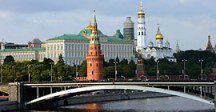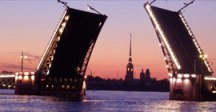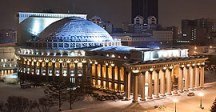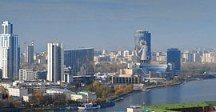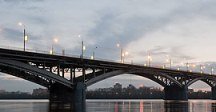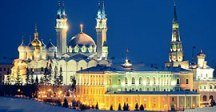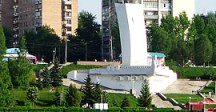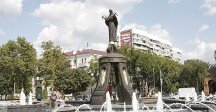Map of Serpukhov
Detailed interactive map of Serpukhov. Map of Serpukhov with streets and numbers of houses. Satellite map of Serpukhov with sights of the city.
The change between the satellite map of Serpukhov and the schematic one is made in the lower left corner of the interactive map.
Serpukhov
The population of Serpukhov: 125,473 people (2021)
Date of foundation of Serpukhov: 1339
Serpukhov city phone code: +7 496 7 (all numbers start with 3 and 7)
Serpukhov city car code: 50, 90, 150, 190
The postal code of the city Serpukhov: 142200
Serpukhov is a settlement near Moscow, which became an independent administrative unit in 1939. The distance from Serpukhov to the center of Moscow is 99 km, to the MKAD is 73 km.
The city of Serpukhov is an attractive place for both travelers and pilgrims, because it is full of museums, ancient houses and temples.
The heart of Serpukhov is the Red Mountain, on which the Serpukhov Kremlin was built in the middle of the 16th century, which became the main building of the city. It is distinguished from other Kremlins by its material – it was built of limestone, not brick.
If you climb the Red Mountain, you can see the amazing panorama of the city and the oldest Orthodox buildings of the town. Serpukhov is often a venue for cultural events. So, the patriotic film festival "Hail, Fatherland!" is held there annually.
What to see in Serpukhov
The historical center of Serpukhov is known as Cathedral Mountain or Krasnaya Gora. It was here that the Serpukhov Kremlin once stood, and here you can find most of the city's attractions.
A beautiful building on Sovetskaya Street is the former Serpukhov City Duma, and then the House of Soviets. It was built in 1860 and at one time heard speeches by leading revolutionary figures such as Mikhail Kalinin and John Reed, after whom the nearby street is named. Currently, the building has no civil purpose and is used by local businesses.
The ruins located on Kaluzhskaya Street are all that remains of the Crucifixion Monastery. The monastery was founded in 1665, but was closed by Empress Catherine the Great in 1751.
The Intercession Old Believers Church was built in 1910 at the expense of Anna Maraeva, who also founded a nearby art gallery. Currently, the church is part of the Serpukhov Historical and Art Museum, which organizes visits to see its beautiful iconostasis.
Halfway down Sovetskaya Street is Sovetskaya Square, where there is now a monument to the most famous Prince of Serpukhov - Prince Vladimir the Brave of Serpukhov. Prince Vladimir was born in 1353, 40 days after the death of his father Prince Andrei Serpukhov, the son of Grand Duke Vladimir and Moscow Ivan I Kalita. He grew up in Moscow with his cousin Dmitry Ivanovich (later known as Dmitry Donskoy) under the tutelage of Patriarch Alexy.
The Serpukhov Historical and Art Museum is located on Chekhov Street, not far from the Vysotsky Monastery. The museum is located in a former majestic house, which houses one of the best art galleries in the Moscow region. Most of the collection came from the private collection of factory owner Anna Maraeva and boasts works by many famous Russian artists.
Lenin Square is located on Moskovskaya Street, a statue of Lenin stands in the center of the square in front of the 19th century Gostiny Dvor building (shopping gallery).
Vysotsky Monastery was founded in 1374 by Prince Vladimir Andreevich the Brave from Serpukhov with the blessing of St. Sergius of Radonezh. Most of the monastery was destroyed during the Crimean raids in 1571 and subsequently rebuilt.
The Serpukhov Kremlin was built in 1556 by order of the Grand Duke of Moscow Vasily III to protect the southern borders of Moscow from the raids of the Crimean Tatars. As soon as the Crimean threat was eliminated, the Kremlin gradually declined.
Even by the 19th century, it was considered a ruin, and its stone was taken for local needs. The last blow was struck in 1934, when the Bolsheviks decided to use the remnants of the Kremlin stone as a building material for the Moscow metro.
In the village of Danki, near Serpukhov, there is the Prioksko-Terraced Biosphere Reserve, which occupies almost 5,000 hectares on the left bank of the Oka River. It was established in 1945 and in 1979 was included in the UNESCO program "Man and the Biosphere". The reserve is especially famous for its herd of European bison, which can be visited as part of an excursion.
The Vladychny monastery was founded in 1360 by Metropolitan Alexy of Moscow during his guardianship of Prince Vladimir Andreevich Serpukhov. In 1598, the monastery was used as the base of Tsar Boris Godunov.
Education in Serpukhov
Serpukhov's higher educational institutions include the Institute of Information Technology and Management, the Serpukhov Military Institute of Missile Forces, a branch of the Moscow Aviation Institute, and a branch of the K. G. Razumovsky Moscow State University of Technology and Management.
Sights of Serpukhov
Serpukhov Kremlin, Seraphim of Sarov Temple, Vysotsky Monastery, Crucifixion Monastery, Church of the Savior Not Made with Hands in Serpukhov, St. Nicholas Cathedral, Serpukhov Historical and Art Museum, Church of the Resurrection of Christ, Assumption Church, Church of All Saints, Church of St. Nicholas the Wonderworker, Trinity Cathedral, Church of the Intercession of the Blessed Virgin Mary, Sretensky Church, Serpukhov Musical Drama Theater, Church of Elijah the Prophet, Monument "Black Tulip", Cathedral Mountain, Rozhdestveno-Telyatevo Estate, Ivanov Mountain, Rai-Semenovskoye Estate, Water tower, Voroshilov Street, Serpukhov Dam, Monument to Vladimir the Brave, Monument to Varlaam Serpukhov.
The largest cities in Russia:
2024 © Russia-Karta.ru
